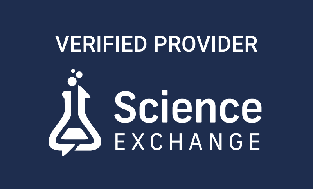It is estimated that about 20% of US adults live with chronic pain1. and pain management medications range from over-the-counter non-steroidal anti-inflammatory drugs (NSAIDs) for mild pain to opioids for severe or chronic pain. While opioids have been shown to manage pain, they are highly addictive and it is estimated that 8 to 12% of people using opioids to manage pain become addicted2. Additionally, opioid addicts often transition to using other narcotics, resulting in increased substance abuse issues that have a huge impact on the individual and society.
Given the enormous social and pharmacoeconomic challenges associated with pain management, there is a need to develop non-addictive pain therapies especially for severe pain. Several studies have shown that voltage-gated sodium channels play a role in the pain response. Specifically, the Nav1.7 channel is expressed on pain-sensing neurons or nociceptors where they send pain signals in response to membrane depolarization due to tissue damage. The important role of Nav1.7 in the pain response was first shown in 2006 where patients with null mutations had insensitivity to pain3. These patients had nonsense mutations that resulted in truncated Nav1.7 protein expression. Conversely, patients with gain of function mutations in Nav1.7 developed a rare disease called primary erythromelalgia that is characterized by burning pain and redness.
Studies on the mechanism of action of Nav1.7 function in response to gain or loss of function have been linked to channel activation or inactivation states4. Gain of function mutations result in the Nav1.7 channel gating being shifted towards activation resulting in hyperpolarization and chronic pain signals. Conversely, loss of function mutations results in the Nav1.7 channel gating being shifted towards a deactivation state with minimal pain signal. A significant body of research over the past several years has collectively demonstrated the role of Nav1.7 in modulating various pain responses4. Not surprisingly, Nav1.7 has become a target for novel analgesic development. However, developing a novel therapeutic targeting Nav1.7 poses a major challenge – there is significant sequence similarities between various voltage-gated sodium channels so developing a Nav1.7 specific small molecule or monoclonal antibody drug has not been successful.
An alternative approach is gene therapy to selectively inhibit Nav1.7 expression. Recently, a landmark paper was published in Science Translational Medicine that demonstrated the use of CRISPR and zinc finger proteins to silence Nav1.75. The approach taken by the group from the University of California, San Diego is novel in that they use a catalytically inactive Cas9 enzyme that does not cut DNA but binds to the target DNA sequence to inhibit gene expression. This “dead” or inactive Cas9 does not modify the genome and is considered to be safer than the regular CRISPR approach. The dead CRISPR system was tested in multiple mouse models of pain including inflammatory pain and paclitaxel induced neuropathic pain. The inactivation of Nav1.7 showed reduced pain in all animals and this insensitivity was shown to be durable for 15 weeks for the neuropathic pain model and 44 weeks for the inflammatory pain model5. The researchers also repeated the study using zinc finger proteins to block Nav1.7 expression and showed that reduction of Nav1.7 increased insensitivity to pain. The inhibition of Nav1.7 using either the CRISPR or zinc finger proteins showed minimal side effects in mice and did not affect normal behavior or mobility.
The research study authors have named this technology pain LATER (long-lasting analgesia via targeted in vivo epigenetic repression of Nav1.7) and have launched a company called Navega Therapeutics to test this gene therapy in human clinical trials. While these are early days, the targeted inhibition of Nav1.7 using gene therapy is based on robust science and clinical observation and has real potential to become a durable and effective therapy to manage chronic and severe pain. The best news of all – patients may have an option for pain relief without the burden of addiction.
References:
1https://www.cdc.gov/mmwr/volumes/67/wr/mm6736a2.htm
2https://www.drugabuse.gov/drug-topics/opioids/opioid-overdose-crisis
3https://www.ncbi.nlm.nih.gov/pmc/articles/PMC7212082/


